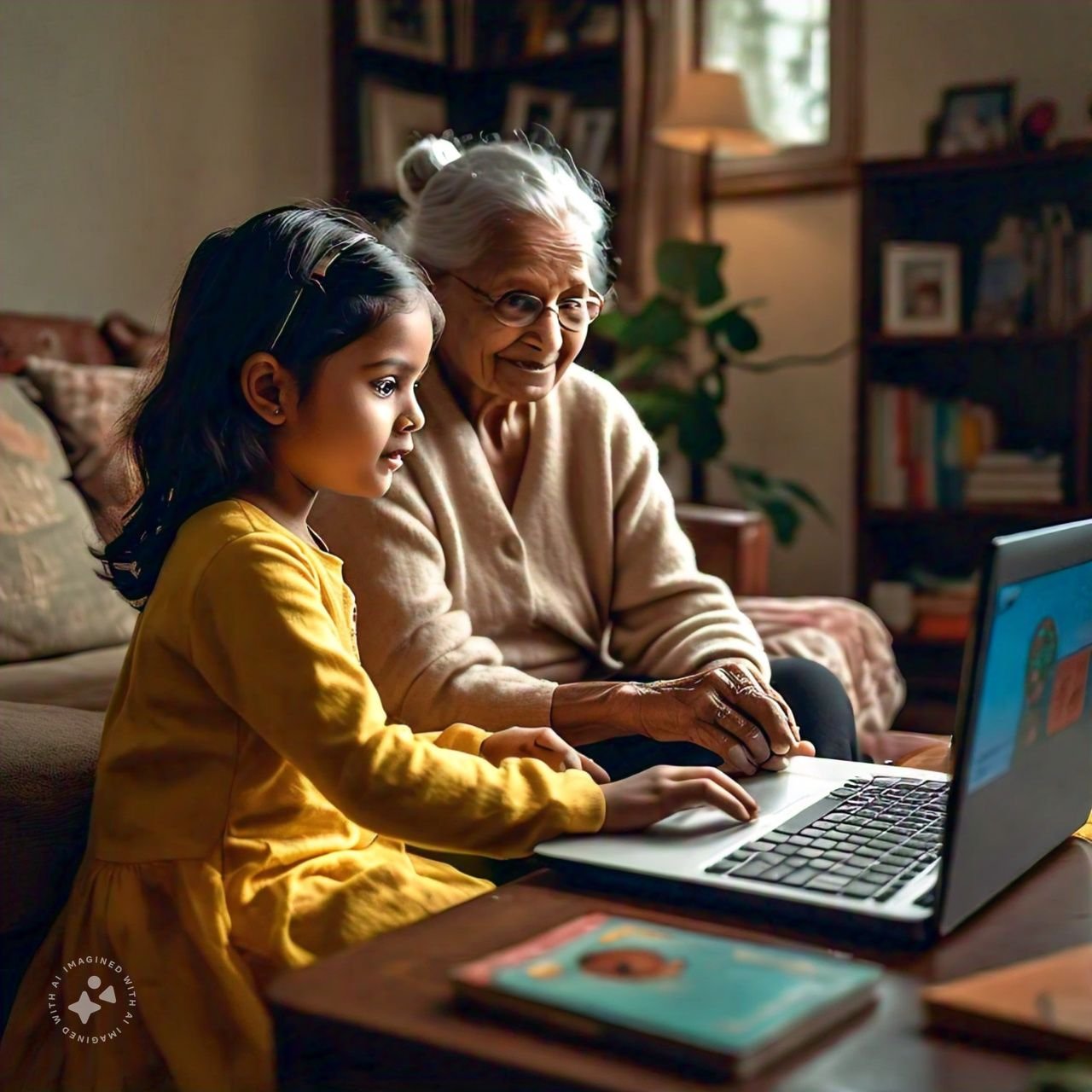
(For ages 5-6, Theme: Intergenerational Learning & Technology)
In a cozy apartment in Chennai’s busy T. Nagar, where the smell of filter coffee always lingered in the air, lived Meera with her parents and her Dadi. While other grandmothers spent their evenings watching TV serials, Meera’s Dadi was different – she was learning to code!
It all started when Dadi watched Meera playing a puzzle game on her tablet. “In my time,” Dadi said, adjusting her thick glasses, “we solved puzzles with thread and needles, creating patterns in fabric.”
Meera’s eyes lit up. “Dadi, you mean like how you taught me to make those beautiful rangoli patterns? With all the dots connected in the right order?”
“Exactly! Each rangoli follows a sequence, just like your computer codes”
That’s when Meera had an idea. She showed Dadi a simple coding game where they had to help a character move through a maze. “Look, Dadi, it’s like planning your knitting patterns – first straight, then turn, then straight again!”
Dadi caught on surprisingly quickly. “Beta, this is just like making a sweater! We need an algorithm – a step-by-step plan. In knitting, we say ‘knit two, purl two.’ In your game, it’s ‘move forward, turn right!'”
Together, they discovered something amazing: Dadi’s traditional craft knowledge matched perfectly with basic coding concepts. They started a special project: using a simple coding app to design new knitting patterns.
When Meera’s computer teacher learned about their project, she invited them to present at the school’s Digital Day. Dadi wore her finest silk saree filled with a lot of pride, and together they showed how ancient Indian patterns of rangolis could be recreated using a little bit of AI and algorithm.
“See this peacock design?” Dadi explained to the amazed audience. “In coding, you call it a ‘loop’ when you repeat steps. In knitting, we’ve been using loops for centuries!”
Their presentation, titled “Digital Dadi Designs: Where Tradition Meets Technology,” won first prize. But the real victory was something else – other grandparents in their community started joining their weekend coding sessions.
They created a small club called “Coding Dadis and Nanis,” where young children taught their grandparents basic coding while learning traditional arts and art forms in return.
One evening, as they sat on their balcony with their tablets and knitting needles, Dadi said something wonderful: “You know, Meera, some people think old and new can’t work together. But look at us – we are proving that wisdom and technology are like sugar and milk in tea – always better together!”
Word Guide:
– Algorithm: A step-by-step plan for solving a problem
– Code/Coding: Instructions that tell a computer what to do
– Rangoli: Colorful patterns made on the floor during festivals
– Interface: Where the user and computer meet
– Innovation: New ideas or methods
Discussion Points:
1. Respecting traditional knowledge
2. Intergenerational learning
3. Technology and tradition working together
4. Pattern recognition in different contexts
5. Community building





